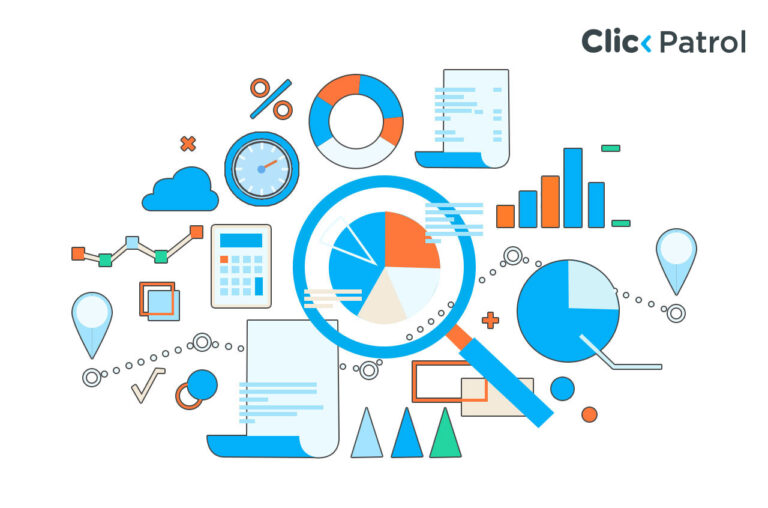
What is MER in digital marketing? How to measure and maximize your marketing efficiency
Abisola Tanzako | Jul 09, 2025

Table of Contents
- Understanding MER: The marketing efficiency ratio explained
- How MER differs from ROAS (Return on Ad Spend)
- When and why to use MER for marketing performance
- Why is MER alone not enough
- Case study: Dasher's 29% MER improvement through strategic product concentration
- How to improve your MER
- Pitfalls to avoid when using MER
- Sustainable scaling starts with MER
- FAQs
MER will quickly become a core KPI for over 60% of DTC marketers in 2025 (Shopify Plus, 2025).
One of the metrics becoming increasingly popular among digital marketers, CFOs, and e-commerce executives is the Marketing Efficiency Ratio (MER).
It differs from the more conventional metrics, providing a comprehensive view of how effectively marketing expenditures drive revenue.
ROAS measures campaign returns, while MER shows the overall marketing impact. MER is therefore vital to guarantee that marketing activity is aligned with the actual business outcome.
We will explain how to calculate MER, when to use it, and how to improve it across your campaigns.
Understanding MER: The marketing efficiency ratio explained
MER = Marketing Efficiency Ratio. It is a cross-metrics performance measure that compares total revenue generated to total marketing spend on all marketing channels and campaigns.
MER Formula:
- MER = Total Revenue / Total Marketing Spend
- It answers a simple question: “How many dollars are we generating for every dollar we spend on marketing?”
Example:
Assuming in May:
- Total revenue = $400,000
- Total marketing spend = $100,000
- MER=400,000 / 100,000=4.0
- Your company earned $4 in revenue for each $1 worth of marketing spent.
How MER differs from ROAS (Return on Ad Spend)
1. MER (Marketing Efficiency Ratio)
- Formula: Total Revenue / Total Marketing Spend
- Focus: Holistic performance
- Use case: Strategic & financial planning
2. ROAS (Return on Ad Spend)
- Formula: Attributed Revenue / Channel Spend
- Focus: Channel-specific
- Use Case: Tactical campaign management
Key differences:
- Attribution: ROAS relies on platform attribution (e.g., Facebook Ads Manager), which can be subject to optimistic bias. MER doesn’t.
- Perspective: ROAS is short-term and tactical (per channel or campaign); MER is long-term and strategic (business-level).
- Use case: CEOs and CFOs typically prefer MER, whereas media buyers and performance marketers tend to utilize ROAS.
When and why to use MER for marketing performance
It includes:
- Unbiased insight: Platforms like Google and Meta are notorious for claiming more revenue than they drive. MER sidesteps attribution issues by measuring total revenue regardless of source.
- Business alignment: MER connects marketing performance with overall business outcomes. You are not just optimizing ads, you are optimizing the business.
- Profitability indicator: Because it includes every marketing expense, MER lets you know whether you are making money. If your MER is below your breakeven, you are losing money even though your ROAS looks good.
- Scalability check: It is crucial to monitor how your MER changes as you scale up. When MER stays the same or improves, your marketing is scalable. When MER gets worse, you are hitting performance ceilings.
MER vs. CAC and LTV: Why you need all three
While the Marketing Efficiency Ratio (MER) provides a top-line perspective on how well your total marketing investment translates into total revenue, it is only a piece of the puzzle. To make informed, sustainable marketing decisions, you must also look at Customer Acquisition Cost (CAC) and Customer Lifetime Value (LTV). Together, all three metrics create a strong performance core.
- CAC – Customer Acquisition Cost
- Formula: CAC = Total Marketing Expenditure / Number of New Customers
Why it matters:
CAC tells you what you are spending to acquire each customer. High MER can appear impressive from a revenue standpoint, but if your CAC is increasing and customer churn is high, you are likely in trouble. High CAC can quickly erode profits, especially in subscription and SaaS models.
LTV: CAC Ratio
- Formula: LTV (Customer Lifetime Value): CAC = Customer Lifetime Value
Why it matters:
This ratio enables you to determine whether the value of each customer exceeds the cost of acquiring them. A rule of thumb is an LTV: CAC ratio of 3:1 or higher. If it’s lower, you are either overspending on acquisition or not retaining customers.
Why is MER alone not enough
- MER is all revenue, not necessarily profitability per customer.
- CAC is all cost per acquisition, not revenue after the initial purchase.
- LTV demonstrates the true long-term worth of customers, allowing you to observe the return on your acquisition investment.
Use case example
Assuming your MER is 4.0 appears to be a good thing at first glance. You spend $25,000 on marketing and get $100,000 in revenue. But:
- If your CAC is $150 and your average order value is $100, you lose money on each customer.
- If your LTV is $300, that does make a difference, but only if you can retain and upsell.
Case study: Dasher’s 29% MER improvement through strategic product concentration
Company: Dasher is an e-commerce company specializing in lifestyle products.
Challenge: Dasher wanted to increase its profitability by achieving double-digit growth in its Marketing Efficiency Ratio (MER).
Strategy Adopted:
1. Ad account restructuring: Dasher grouped its ad campaigns into segments by product categories, such as home lifestyle and wearables.
2. Product choice optimization: By reviewing past sales history, such as monthly average units purchased, average order value, and Shopify’s inventory levels, Dasher identified the top-performing products. They then focused their ad spending on these “winning” products to maximize return on ad spend.
Results achieved:
- 29% MER Increase: Through these strategic improvements, Dasher significantly improved its MER, converting marketing spend into revenue more efficiently.
- Better ROAS: Focusing on top-performing products and optimizing campaign spending also created a more efficient return on ad spending (ROAS) and further maximized overall marketing effectiveness.
- Conclusion: Employing MER as a key performance measure enabled Dasher to make informed decisions about high-quality product promotion and ad plans, thereby significantly improving marketing effectiveness and sales performance.
How to improve your MER
1. Boost Conversion Rate (CRO): Your MER will automatically improve if your website converts more visitors into customers. Tactics are:
- Landing page optimization
- Using urgency and social proof
- Simplifying checkout UX
2. Boost AOV (Average Order Value): When customers purchase more in each transaction, revenue increases without requiring a corresponding increase in spending. Try:
- Bundles
- Upsells and cross-sells
- Minimum free shipping values
3. Optimize targeting: Bad targeting is wasteful with spend. Use first-party data, lookalike audiences, and negative targeting to improve ad relevance.
Common MER benchmarks by industry
They include:
- E-commerce (DTC brands):
3.0 – 5.0 (For every $1 in marketing, $3–$5 in revenue) - SaaS & subscription-based businesses:
4.0 – 8.0 (Due to recurring revenue and lower CAC over time) - B2B services:
5.0 – 10.0+ (Longer sales cycles, higher deal value, leaner marketing spend) - Consumer packaged goods (CPG):
2.5 – 4.0 (Typically lower margins, high volume) - Health and wellness:
3.5 – 6.0 (Especially if supplement or fitness-related) - Luxury and high-ticket items:
4.0 – 7.0+ (Higher AOV allows more efficient returns)
Tracking MER: Tools and techniques
You may monitor MER manually or using proprietary analytics software. Manual method:
1. Create a Google Sheet with:
- Daily/weekly ad spend
- Total revenue (from your store platform like Shopify)
- MER calculation
2. Analytics platforms:
- Triple Whale – MER dashboards for eCommerce
- Northbeam / Rockerbox – Cross-channel attribution + MER
- Supermetrics + Looker Studio – Build custom MER dashboards
- Shopify + GA4 – Use both to compare revenue vs ad spend
Pitfalls to avoid when using MER
They include:
- Using ROAS alone: ROAS is often channel-specific and vulnerable to the false attribution bias. It may satisfy an ad dashboard, but it does not reflect the greater business truth. MER prevents this by reporting blended efficiency across all channels.
- Misinterpretation of MER Trends: MER does not record postponed conversions or consider the impact of multi-touch journeys. Daily fluctuations can be misleading; measure trends on a weekly or monthly basis for improved comprehension.
- Omitting COGS and Margins: MER reports revenue efficiency, not profitability. A high MER can provide a false sense of success if the cost of goods sold (COGS) or gross margin is not included. Always report profit along with MER.
Sustainable scaling starts with MER
In today’s increasingly complex digital marketing landscape, one can become overly reliant on metrics like ROAS and end up making decisions that lead to unsustainable growth.
The Marketing Efficiency Ratio (MER) provides a more comprehensive and objective approach to evaluating the actual impact of your marketing efforts.
Pitting total revenue against total marketing spend, MER enables brands to shift away from vanity metrics and focus on business-level outcomes.
When combined with CAC and LTV, MER provides a powerful triple punch of KPIs to quantify acquisition efficacy, customer value, and scalability.
As a founder, CMO, or performance marketer, understanding and maximizing your MER can equate to smarter decisions, more profitable growth, and improved marketing and financial alignment.
FAQs
Q. 1 Is MER better than ROAS?
It is not better, just not the same. MER is less specific and more objective, while ROAS is more precise. Use both together for a complete picture.
Q. 2 Does MER include organic traffic?
Yes. MER considers all revenue (organic + paid) against paid marketing spend, so it’s a hybrid measurement.
Q. 3 Do I include influencer or email marketing in MER?
Yes. Your MER calculation should include any spend-based marketing contributing to your top-line revenue.





